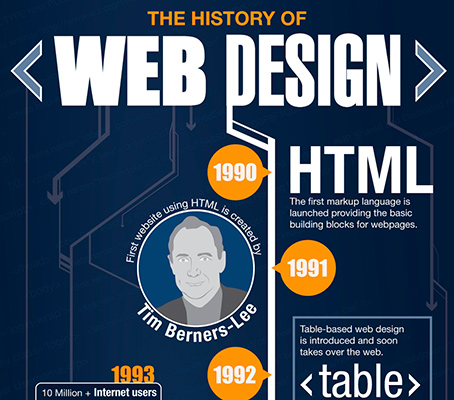The Evolution Of Web Site Design: From Past To Present
The Evolution Of Web Site Design: From Past To Present
Blog Article
Staff Writer-Bradshaw Hyldgaard
In the past, internet sites were basic and concentrated on information. Navigation was straight, and design was for desktop computers. Now, customer experience is vital. Data guides layouts for very easy navigating. Responsive formats suit different devices. Today, dark mode reduces stress, and minimal menus enhance navigation. Interactive attributes involve customers, and strong visuals stand apart. AI assimilation enhances involvement. See just how read full article has developed to boost your on-line journey.
Very Early Days of Web Design
In the early days of web design, simplicity preponderated. Sites were standard, with restricted shades, typefaces, and designs. The emphasis was on supplying information as opposed to showy visuals. Customers accessed the web with sluggish dial-up links, so speed and capability were key.
Navigation food selections were straightforward, generally situated on top or side of the web page. Web sites were developed for computer, as mobile surfing had not been yet common. Web content was king, and designers prioritized simple readability over complicated style components.
HTML was the main coding language used, and designers needed to function within its restraints. Animations and interactive features were very little contrasted to today's standards. Internet sites were fixed, with little vibrant content or individualized user experiences.
Increase of User-Focused Layout
With the evolution of website layout, a change in the direction of user-focused design principles has actually become progressively famous. Today, producing internet sites that focus on customer experience is critical for involving visitors and attaining business objectives. User-focused style entails comprehending the needs, choices, and actions of your target market to tailor the website's format, content, and includes appropriately.
Designers currently conduct comprehensive research, such as customer studies and functionality testing, to collect insights and comments straight from customers. This data-driven technique aids in producing user-friendly navigating, clear calls-to-action, and aesthetically attractive interfaces that reverberate with site visitors. By positioning the individual at the center of the style process, web sites can provide a much more customized and satisfying experience.
Receptive style has actually also emerged as a crucial aspect of user-focused style, guaranteeing that web sites are maximized for numerous gadgets and display sizes. This adaptability enhances ease of access and use, catering to the diverse means users interact with websites today. Fundamentally, the surge of user-focused design signifies a shift in the direction of creating electronic experiences that focus on the needs and expectations of completion customer.
Modern Trends in Website Design
Discover the latest patterns forming web design today. One famous fad is dark setting layout, providing a streamlined and modern-day look while minimizing eye pressure in low-light settings. An additional crucial fad is minimalist navigating, simplifying food selections and improving individual experience by concentrating on essential elements. Including micro-interactions, such as computer animated switches or scrolling impacts, can produce an extra interesting and interactive web site. Responsive style remains important, ensuring smooth user experiences across different devices. In addition, utilizing bold typography and asymmetrical designs can include visual interest and accentuate details material.
Integrating AI technology, like chatbots for consumer support or tailored referrals, boosts customer interaction and simplifies processes. Accessibility has likewise come to be a substantial pattern, with developers focusing on comprehensive layout practices to deal with diverse user demands. Embracing sustainability by enhancing website performance for rate and performance is an additional arising pattern in web design. Working together with individual feedback and data analytics to repeat and enhance layout continually is crucial for remaining appropriate in the ever-evolving electronic landscape. By embracing https://smallbiztrends.com/2022/06/updating-your-social-media-strategies.html -day patterns, you can produce a visually appealing, easy to use site that reverberates with your audience.
Verdict
As you reflect on the evolution of site design from the very early days to now, you can see how user-focused style has actually become the driving force behind contemporary patterns.
Embrace the journey of adjustment and adaptation in website design, always maintaining the customer experience at the leading edge.
Tippingpointdigital
Keep current with the latest trends and modern technologies, and never stop evolving your technique to produce aesthetically magnificent and user-friendly internet sites.
Develop, adjust, and produce - the future of website design remains in your hands.
